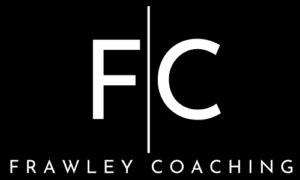We’re natural helpers. We want to fix problems. We have this inherent need to be the solution finders for ourselves and to our people. It is so important that we learn how to stay our own course and keep our own oxygen masks on so we can best serve our clients, our loved ones, and ourselves. How do we do that if we aren’t practiced in the art of identifying our priorities, especially if we still feel like we don’t yet know what we don’t know? I’d like to talk to you about this today.
What Are The Six Personal Perspectives:
Step 6: Be Accountable

Let’s discuss Step 2 today: Commit to the 80/20 Rule.
The 80/20 principle can be found in various industries:
- Business: In business, approximately 80% of sales often come from 20% of customers, or 80% of profits come from 20% of products or services.
- Time Management: People often find that 80% of their productivity comes from 20% of their time spent on tasks, highlighting the importance of prioritization.
- Software Development: Roughly 80% of software errors or bugs are caused by 20% of the code, emphasizing the need for efficient debugging and quality assurance processes.
- Finance: In finance, around 80% of wealth is often held by 20% of the population, as observed in income distribution patterns.
- Manufacturing: In manufacturing, it’s common to find that 80% of defects are caused by 20% of production issues, highlighting the importance of identifying and addressing key problems.
- Marketing: In marketing, roughly 80% of sales may come from 20% of advertising efforts or channels, indicating the importance of focusing on the most effective marketing strategies.
- Customer Service: In customer service, around 80% of complaints may come from 20% of customers, emphasizing the significance of addressing the concerns of key clients.
We’re self motivated. We have the autonomy to build as far as our imaginations can take us, and many entrepreneurs experience infrequent or maybe even frequent motivation doldrums. Having a clear understanding of the most important tasks and goals ahead of us helps us stay centered in our business and it helps us make consistent progress as our businesses grow.
Good talk, Lins.
I’m new here. What is my 20%?
- Lead Generate
- Lead Follow-up
- Go on Appointments
- Service Clients
If a new agent can identify these priorities now and make it a practice to do these things before everything else, they will no doubt find success and scalability.
Scaling Up
There will likely come a time when an agent finds themselves with too much on their plate and an inability to stay on top of all of the things they need to manage. If that’s the case, they’re going to want to first focus on their top 20% activities, and then identify leverage opportunities. Leverage will come in the form of one of the following:
- Person
- Tool/System
- Technology
Either the agent will need to bring on a new hire to offset the 80% burden, or they’ll need to introduce a new level of systems, tools, or tech to maintain or grow their business. This ceiling of growth is sometimes painful and the breakthrough is one of the more beautiful things a coach like me gets to witness every day as agents crack their own codes.
If you’d like to learn more about identifying your own priorities, I strongly suggest you pick up a copy of The One Thing by Jay Papasan and Gary Keller. Extra credit, start or continue listening to The One Thing Podcast.





